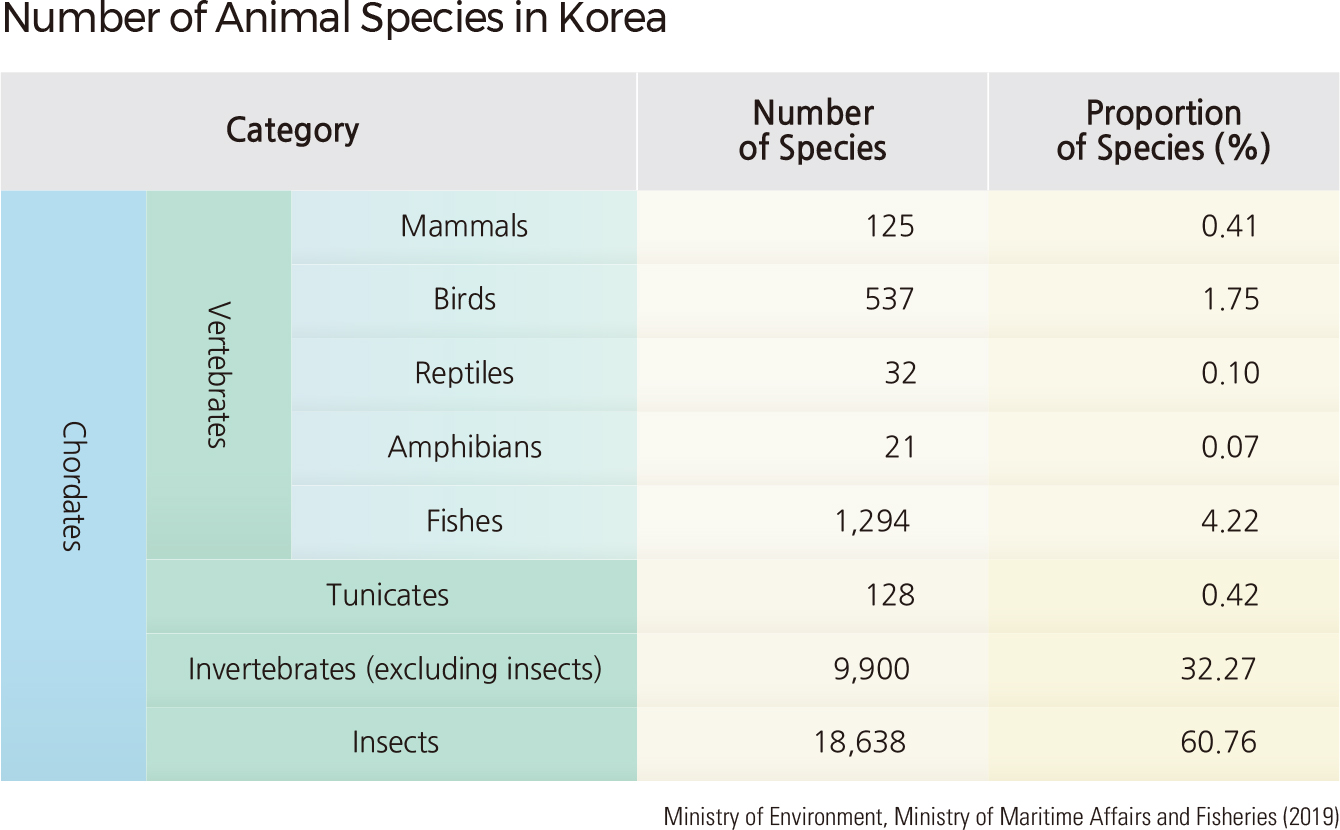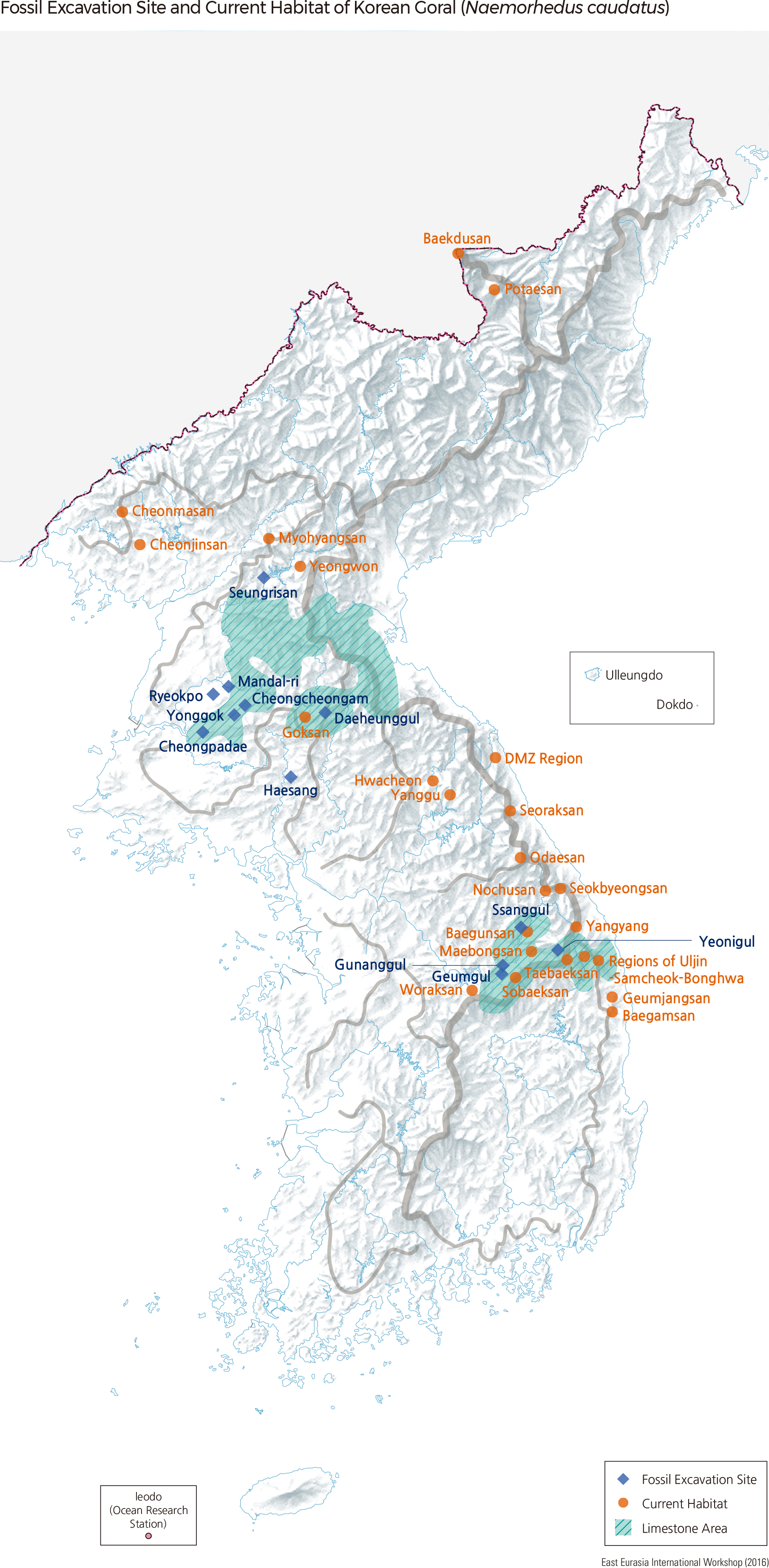Comprehensive Edition 2022
Korea is home to approximately 100,000 species of living organisms, of which 52,628 species have been identified and recorded. The Korean Peninsula is ecologically isolated from the continent by the high mountain terrain of Baekdusan and two large rivers. These natural barriers limit wild animal migration to Korea from China and Russia. As a result, approximately ten percent of all species found in Korea are endemic—species that are native to a particular geographic area and not naturally found anywhere else in the world. Among higher-order animals, one mammalian species, one bird species, six amphibian species, and 66 fish species are endemic to Korea.
Many species in Korea are listed as endangered. Conservation projects for endangered wild animal species are being conducted to target the Asiatic Black Bear (Ursus thibetanus ussuricus), Korean Goral (Naemorhedus caudatus), Korean Fox (Vulpes vulpes peculiosa), Oriental Stork (Ciconia boyciana), Crested Ibis (Nipponia nippon), Sea Horse (Hippocampus coronatus), Green Turtle (Chelonia mydas), and several other species.
Recently, a decline in the number of predators at higher trophic levels has led to population increases of small and medium sized mammals such as Wild Boar (Sus scrofa) and Water Deer (Hydropotes inermis), which have damaged crops and cultivated areas. Some wild animals have been negatively affecting the faunal ecosystem. The government designates invasive animals and wild animals as ecosystem-disturbing species, harmful wild animals, and animals reverted to wild state to prevent disturbance of the ecosystem by invasive animals and damage to people and property by wild animals.
The Korean Goral (Naemorhedus caudatus) is a wild goat species found in the mountains of eastern and northern Asia, including Russia, China, and Korea. It has been on Earth for 2 million years; individuals today are called "Living Fossils." Approximately 700–800 gorals live in Korea. This species has been listed as endangered in South Korea and has been designated as Natural Monument No. 217. It inhabits steep, rocky mountains along Nangnimsanmaek and Taebaeksanmaek; a few are also found around the Baekdusan area and in the Korean Demilitarized Zone.
Fossil remains and historical documents indicate that in the past, unlike today, the Korean Goral inhabited highlands and lowlands. However, human disturbance caused the species to be displaced from its original habitats. The present-day distribution area of Korean Gorals is a refuge for the remaining gorals that have survived a complex set of factors, including population growth and consequent land-use change, cultivation practices in forests such as slash-and-burn, and poaching of wildlife. |








